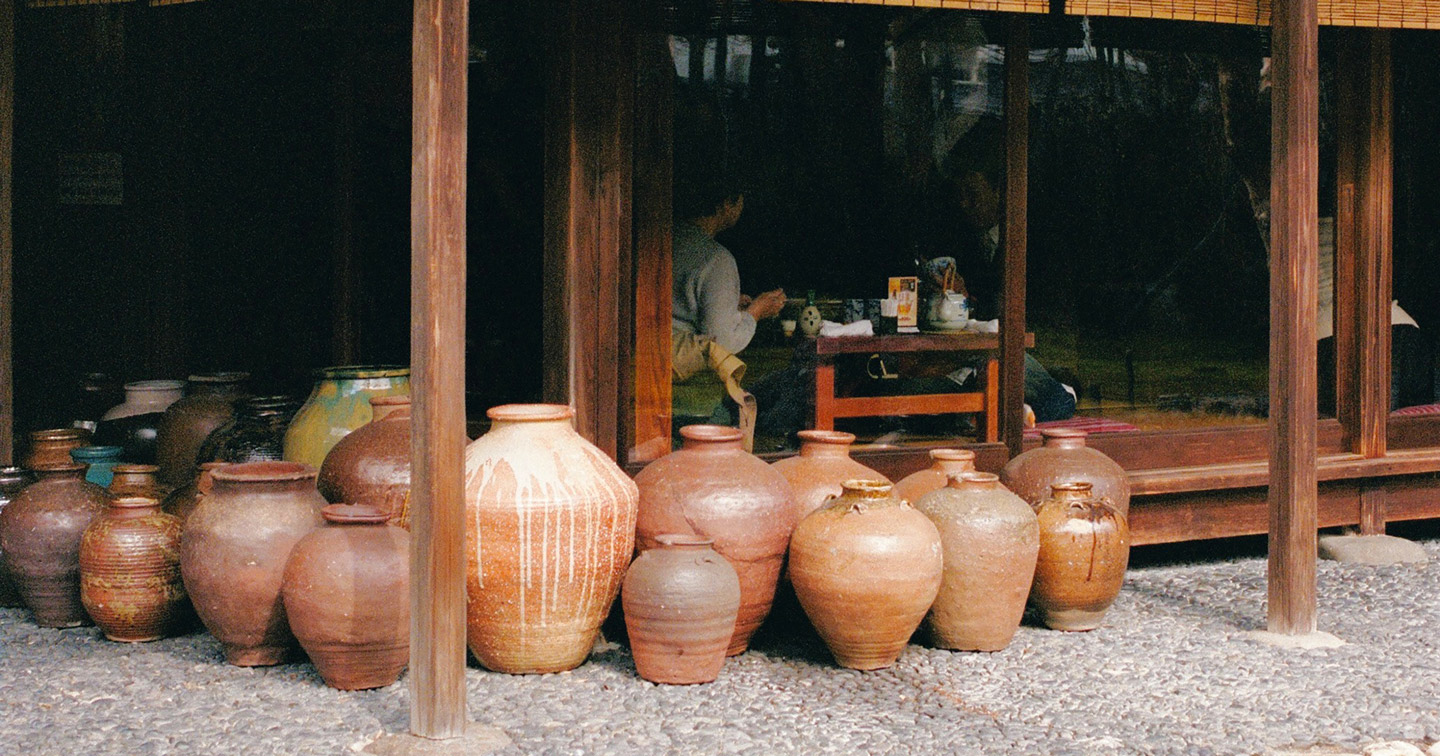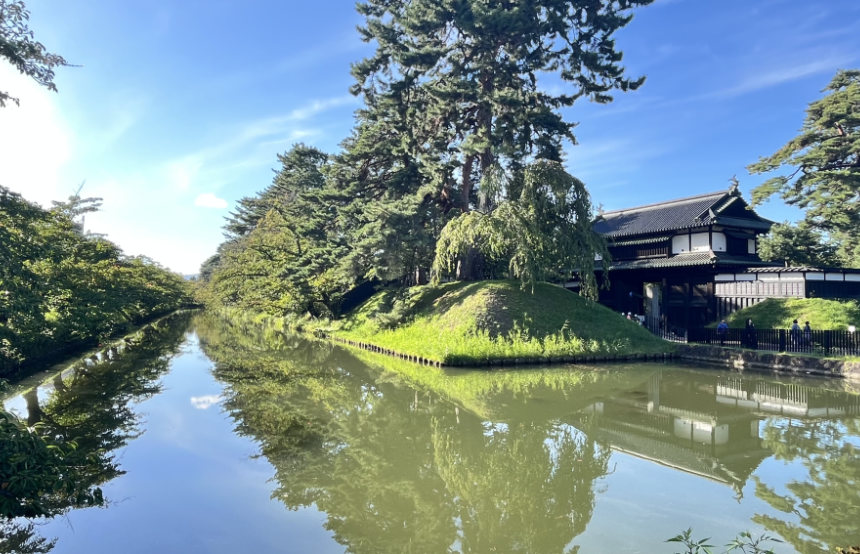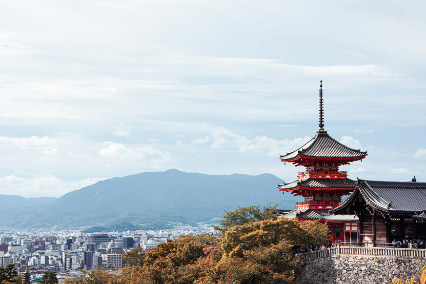Published 8th Feb. 2024
Reading time
Japan has it all. From silky shores and ancient temples to tea ceremonies and snow-capped mountains, it shouldn’t come as a surprise that 25 million tourists couldn’t resist a trip to Japan last year (2023). But to continue being the best of the best, Japan must tackle one core idea: sustainability. And time is of the essence, especially as footfall rises to pre-pandemic levels. The country has seen an increased strain on resources. Fortunately, there are ways we can all chip in to help. Whether it be promoting off-the-radar destination or spearheading community-based projects, read on to discover how – and why – we’re vouching for sustainable tourism in Japan.
Japan’s tourist numbers reaching pre-pandemic levels is something of a double-edged sword. While the surge is good news for the economy, overtourism has put pressure on both Japan’s people and land: Mount Fuji is clogged with human traffic jams, leading to accidents and erosion; and public transport systems are under serious strain. So how can we strike a beneficial balance? By venturing to lesser-charted territories and converting overtourism into Undertourism. We’re keen champions of visiting off-the-radar spots like Mitsutoge, a lesser-visited mountain that swaps clambering crowds for enviable views of Mount Fuji (we know where we’d rather be). Japan also has plans to improve its infrastructure and distribute tourists more evenly, so you can visit the all-important hotspots without leaving a trace.
We believe that travel should be a force for good, and our concept of Philantourism (a mash-up of philanthropy and tourism) embodies just that. It’s the act of considering which holiday destination will benefit from your spending money, and when it comes to sustainable tourism in Japan, this is a sure-fire way to help. Tourists put over five-million yen into local pockets in 2023 – so simply turn up, treat yourself to locally made matcha, chopsticks and ceramics and help do your bit in supporting one of the country’s fundamental economic pillars.
Adopt a ‘local-first' attitude and support community-based tourism in Japan. By immersing yourself in experiences and accommodation owned by local communities, economic benefits remain with them, rather than ending up offshore. It’s a win-win situation – by staying in community-owned homestays, for example, you can experience authentic Japanese culture and hospitality while financially uplifting the owners. Alternatively, visiting places affected by natural disasters is an easy way to soak in some of the country’s stunning scenery all the while aiding sustainable tourism in Japan.
Beneficial interactions with a country’s indigenous communities are a key component in sustainable travel, and Japan is no stranger to this. Hokkaido – the country’s northernmost island – has been home to the indigenous Ainu people for centuries, and a visit here offers the chance to immerse yourself in Ainu history and culture. Their religious beliefs, unique language, respect for nature and traditional dances are shared at the yearly 1,200 festivals. Or, check out Upopoy National Ainu Museum and Park, Japan’s only museum dedicated to Ainu culture. Intended to protect and promote Ainu communities, an educational and enjoyable day here ensures Japan’s indigenous communities continue to thrive.
Written by Evie Buller | Header Image by Zoe Fidji.

Whether you’re a family seeking Tokyo’s futuristic museums or a couple wishing to relax in Hokkaido’s onsens, we’ve got you covered. Our consultants have first-hand experience of living in Japan, so we know the secret spots off the beaten track (and how to reach them). Train travel is the best and most efficient way to explore the country, and wherever you visit, getting to grips with Japan’s diverse culture is a must. We work with guides who provide in-depth experiences on the history of Samurai or Geisha culture, and we have hand-picked traditional ryokan properties to rest your head in.
ENQUIRE NOWPractical advice and inspiration for your next trip

On a recent research trip to Japan, our Asia specialist, Joyce, spent ten days exploring the lesser-trodden treasures of Tohoku, in northeast Honshu. She stayed in cosy mountain-framed ryokans, hiked along Iwate’s rugged coastline and admired Japan’s deepest lake – all without the crowds. From sipping smooth sake to sampling fresh uni, it was a trip for the books. Keen to know more? Read on for the most memorable moments from Joyce’s time in Japan.
24th November 2025 - Japan Travel Tips

Surfing may not be as synonymous with Japan as sushi or sake, but there’s a thriving surf scene in the ‘Land of the Rising Sun’. The annual typhoon season (especially between August and October) brings powerful swells to Japan’s Pacific Coast, making this the optimal time to hit the waves. And with almost 18,500 miles of coastline to choose from, there’s no shortage of shores. Keen to narrow down the options?
12th August 2025 - Japan Beaches & Islands

Japan is world-renowned for its spectacular scenery – and it’s easy to see why. From shimmering lakes and cascading waterfalls to lush forests and majestic mountains, its natural beauty is truly something to behold. So, whether you’re looking to cycle through the lush pine trees at Amanohashidate or relax on the white-sand beaches of the Amaharashi Coast, we’ve got you covered. Read on to discover our shortlist of the most unmissable Japanese landscapes… Amanohashidate Sandbar,
28th July 2025 - Japan Travel Inspiration

Our team of destination experts will get to know you and your unique requirements for your holiday

We work with you to build an ultra-personalised holiday itinerary with your choice of accommodation, experiences and activities

All of our holidays include little extras designed to make a big difference to your trip, from fast-tracking you through airport check-in and security to our network of local Concierges